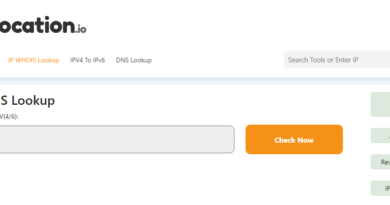How to Secure Cloud Environments?
Hybrid cloud security is a wide range of control-based technologies and policies that are used to safeguard information, data, applications, and infrastructure associated with cloud computing. Cloud applications and data must be protected in the same way as in on-premises settings. This article will provide insights into the cloud security technologies and approaches needed to effectively secure business-critical data in the cloud. Let’s start with the basics.
What Is Cloud Security?
Cloud security is a branch of cybersecurity that focuses on securing cloud computing systems. It includes maintaining data privacy and security across online infrastructure, applications, and platforms. Cloud providers must secure these systems and the clients who use them, whether an individual, small to medium business, or enterprise.Cloud providers use always-on internet connections to host services on their servers. Because their business relies on customer trust, they use cloud security methods to keep client data private and secure. However, the client is also partially responsible for cloud security. Understanding both aspects is essential for developing a successful cloud security solution.
The following categories comprise cloud security:
- Data security
- Identity and access management (IAM)
- Leadership (policies on threat avoidance, detection, and mitigation)
- Data retention (DR) and business continuity (BC) planning
- Legal compliance
Essential Ways to Secure Cloud Environment
Data encryption in the cloud
When storing data in the cloud, you must ensure it is properly protected. A cloud environment should support data encryption in the cloud. Examine the encryption policies provided by your cloud service provider. Each provider should have detailed guidelines outlining how they protect the data stored on their cloud servers. Your company should be aware of these guidelines before migrating any data.
Establishing cloud data deletion policies
It’s a solid assumption that your company will leave the cloud environment it’s currently using at some point. It could mean migrating to a new cloud provider or returning to an on-premise architecture. On the other hand, if your time with a client is up, you may need to delete their data. Whatever the case, you will need to delete data from your cloud environment. Your organization must implement data deletion policies that safely remove this data from your system while remaining compliant.
Managing access control
Companies don’t want free access to the data in their cloud without proper authorization. By implementing access control policies, you can manage the users who attempt to access your cloud environment. You can also assign different users different rights and access policies. For example, low-level cloud users will not have the same access rights as high-level security administrators.
Monitor your cloud environment for security threats
Traditional security solutions were designed to defend against threats launched against your systems. However, this is no longer sufficient; you must now stop a threat on your infrastructure before it can attack. Threats can lurk in your cloud environment, waiting for the right moment to strike. Monitoring your cloud environment allows you to detect hidden malware.
Inform your employees about your cloud security procedures
Your own enterprise and its employees can sometimes pose the greatest security risk to your cloud technologies. An employee who misuses your cloud environment, whether through negligence or a lack of knowledge, can open the door for malicious actors to enter your system. As with any technology, your company should spend some time training any employees who will be using the cloud environment on the best security practices you’ve implemented. This way, you can both prevent internal security threats and prepare for external ones.
Cloud security architecture
The cyber threat landscape is vast and ever-changing. Independent cybersecurity and data privacy solutions, while useful in protecting workloads, create gaps in an enterprise’s defenses. To provide dependable security for modern workloads across multiple domains, a multi-layered strategy incorporating the most recent cybersecurity technologies with data authentication and encryption is required.Security experts frequently use encryption to protect data in an environment with zero trust, such as that provided by a hybrid cloud environment. To ensure that the service network is comprehensive, encryption techniques should be used at every layer, which include:
- Data transfer
- Distant storage
- Backend operations, such as the server’s operating system and software
While cloud security is important, it’s not impossible to secure the cloud. By following the best practices and using the right tools, your company can enjoy all of the benefits the cloud offers while keeping its data safe.




